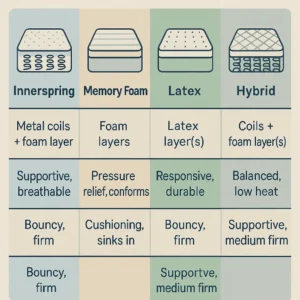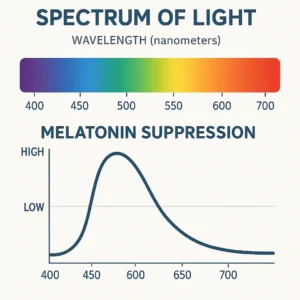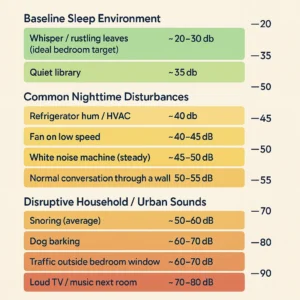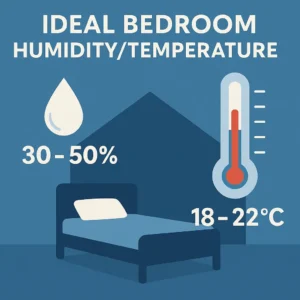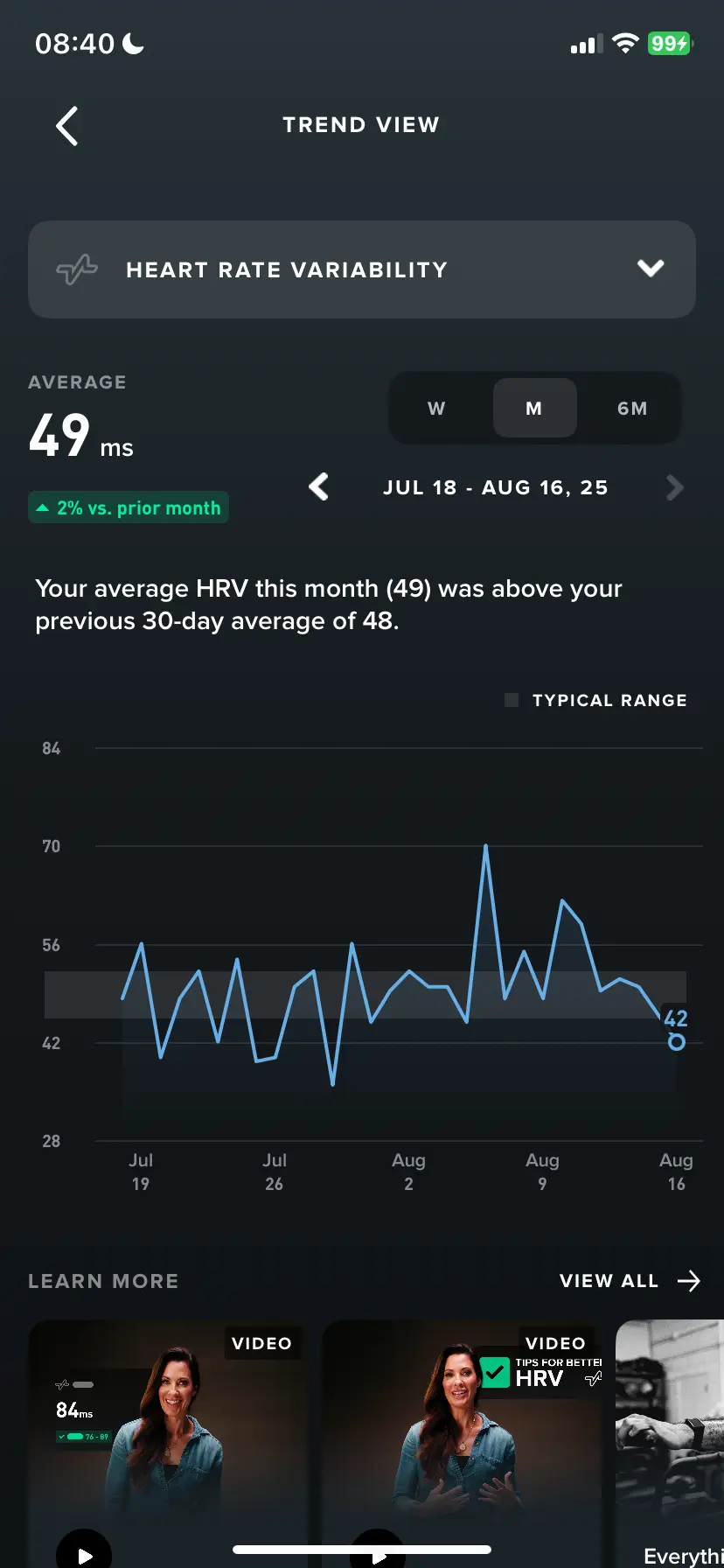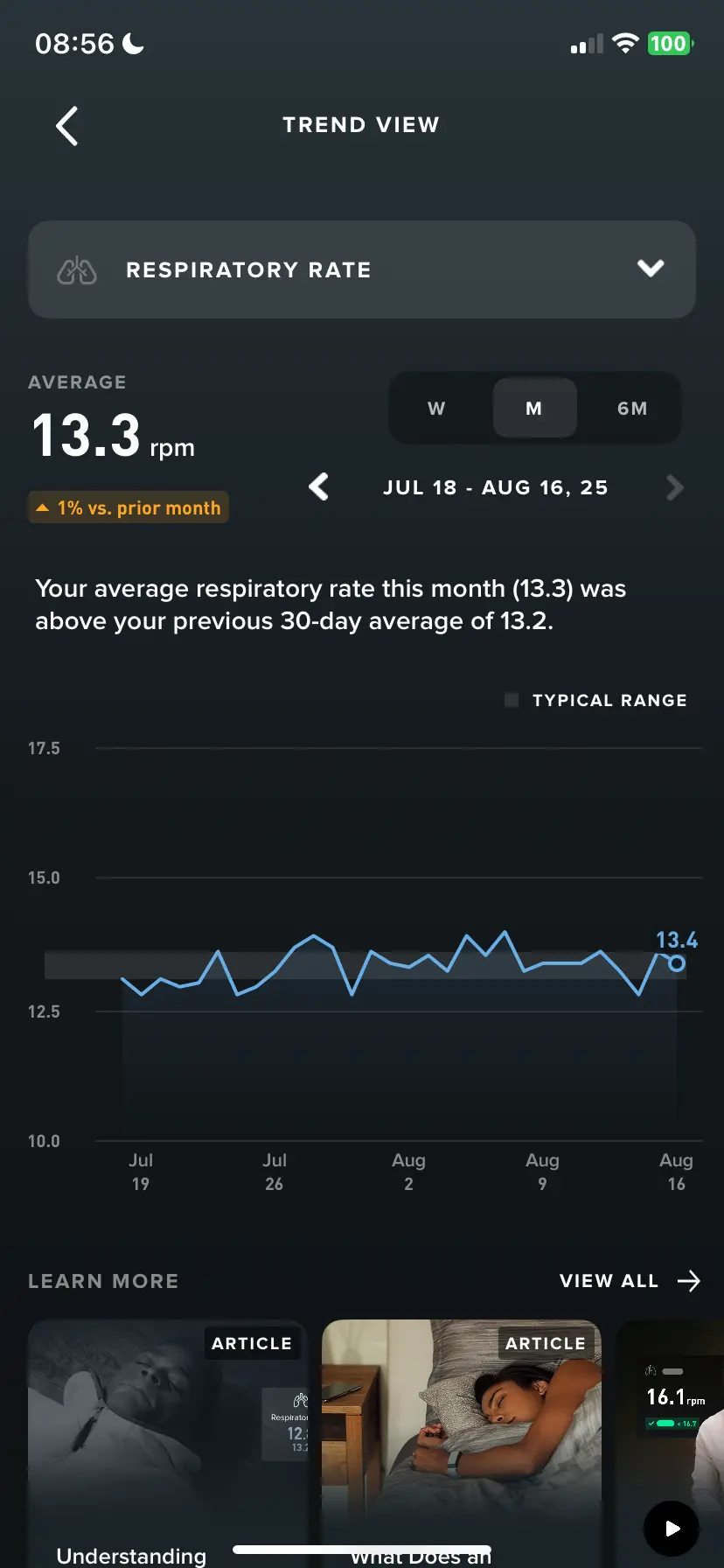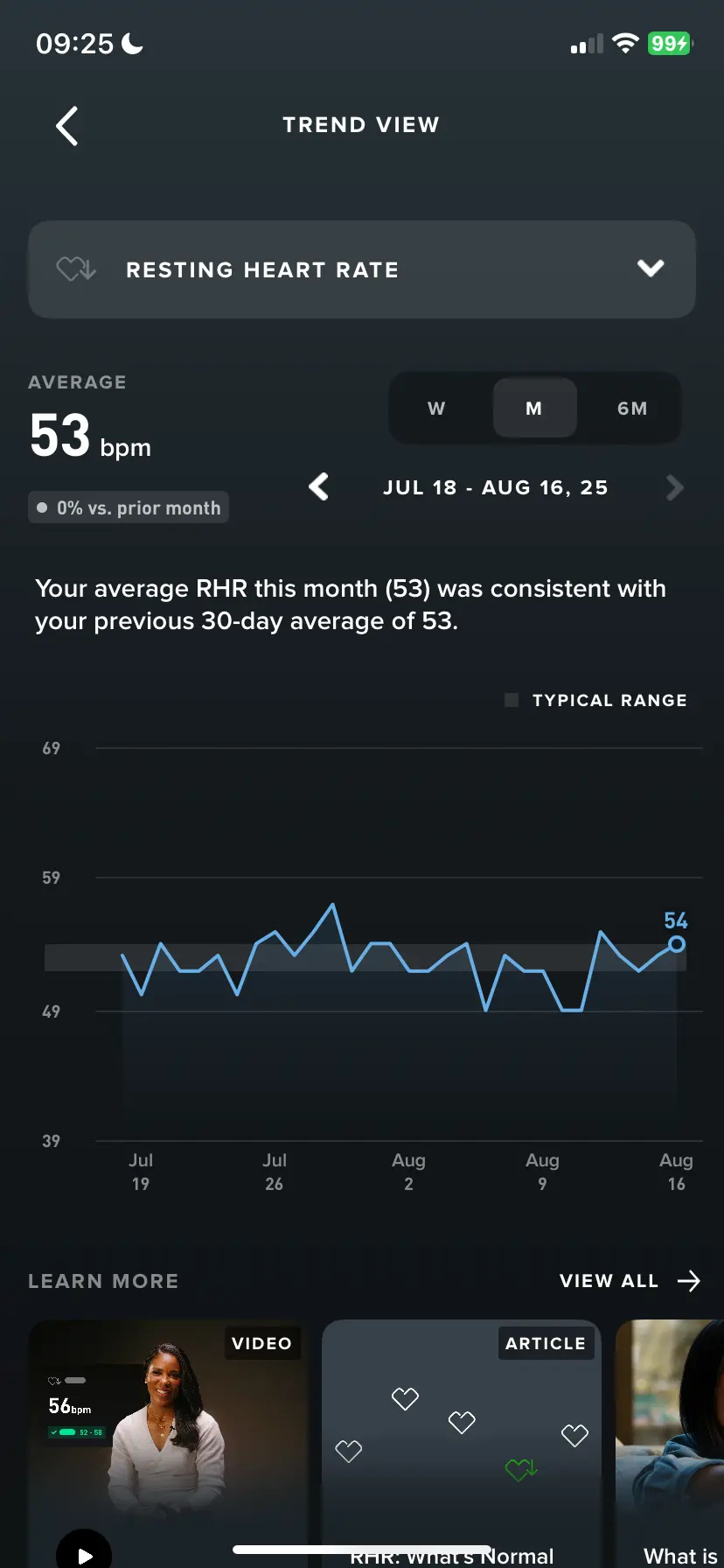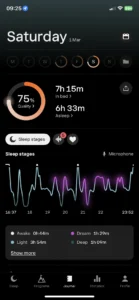Bedding Essentials
Mattresses
Memory Foam vs. Innerspring vs. Hybrid
When you lie down on a memory foam mattress, the foam molds to your body, easing pressure points—but can feel warm without good airflow. Traditional innerspring mattresses deliver a bouncy feel and superior ventilation, though they may not cradle your curves as closely. Hybrid mattresses blend coils with comfort layers to offer the best of both worlds: balanced support, temperature regulation, and a longer lifespan.
Smart & Adjustable Mattresses
If your sleep needs change night to night, a smart adjustable mattress can be a game-changer. With customizable firmness settings and often built-in sleep tracking features, these beds let you fine-tune support and temperature right from your phone—ideal for couples with different preferences.
Pillows & Supports
Loft & Firmness Options
The secret to a pain-free neck lies in matching pillow loft with your sleep position. Side sleepers often find high-loft pillows grant the extra lift they need to keep the spine aligned, while back sleepers typically rest best on medium-loft designs that fill the gap without tilting the head too far forward.
Ergonomic & Contouring Designs
For targeted support, consider an ergonomic contour pillow that cradles the natural curve of your neck. These pillows use memory foam or adaptive polymer materials to maintain consistent support through all sleep stages.
Sheets, Covers & Protectors
Materials (Cotton, Bamboo, Tencel)
Sheet material can make or break your comfort zone. Breathable cotton and bamboo blends wick moisture and promote airflow, while Tencel delivers a silky feel with natural temperature-regulating properties.
Thread Count vs. Breathability
A higher thread count doesn’t always mean a better night’s rest. Above 400, extra threads can trap heat. Focus instead on weave type and fabric weight to balance softness with airflow. For more on decoding labels, see our guide on thread count and breathability.
Blankets & Comforters
Weighted Blankets
Wrapped up in even pressure, a weighted blanket mimics the feeling of a gentle hug, easing anxiety and helping many users drift off faster. Aim for a blanket that’s about 10% of your body weight for optimal results.
Temperature-Regulating Layers
When nights swing between cool and warm, a temperature-regulating comforter steps in. Look for layers infused with phase-change materials or moisture-wicking fills that adapt to your body heat and ambient temperature.
Light Management
Blackout Curtains & Shades
Keeping external light at bay is crucial for early melatonin release. Blackout curtains with triple-weave fabrics can block up to 99% of incoming light, making them ideal for shift workers or those sensitive to dawn’s glow. For tips on selecting the right material, see what to know about blackout curtains.
Blue-Light Blocking Glasses
Wearing blue-light blocking glasses in the evening cuts exposure around 460–480 nm, the wavelength most responsible for suppressing melatonin. Studies show lenses filtering about 30% of blue light can improve sleep quality and reduce sleep-onset latency when worn 2 hours before bedtime.
Dawn Simulators & Wake-Up Lights
Dawn simulators mimic a natural sunrise by gradually increasing brightness over 30–45 minutes. This gentle light transition helps regulate circadian rhythms and enhances morning alertness without the jarring effect of a traditional alarm clock. For more on how light affects sleep, check how light affects sleep.
Sound Control
White-Noise & Sound-Masking Machines
White-noise and sound-masking machines generate consistent ambient sounds to cover sudden noises—think gentle rain, fan hum, or steady rainfall. Many users report faster sleep onset and fewer nighttime awakenings when masking disruptive sounds. Explore top picks in our white noise machine reviews or learn why these devices work in this white noise sleep guide.
Sleep-Specific Earplugs
Earplugs designed for sleep balance noise reduction with comfort, often using soft silicone or foam to block sound without irritating the ear canal. They can lower ambient noise levels by 20–30 dB, ideal for light sleepers or those in noisy environments. Check out our roundup of the best earplugs for sleep and see how they compare on this earplug comparison guide.
Sleep Headphones & Audio Apps
For those who prefer soothing sounds or guided meditations, sleep headphones and audio apps offer an immersive audio experience. From soft fabric headbands with built-in speakers to bone-conduction earbuds, options abound. Apps like Calm and Headspace also include sleep stories and soundscapes—see our top sleep coaching apps or explore detailed reviews at TrackHSleep.
Temperature & Air Quality
Cooling & Heating Devices
Fans vs. AC vs. Smart Thermostats
A steady breeze from a fan can improve airflow and create white-noise benefits, while air conditioning offers precise temperature control. For automated climate tweaks, a smart thermostat paired with your HVAC system can adjust settings based on sleep schedules or ambient room data.
Heated Mattress Pads
When chilly nights keep you tossing and turning, a heated mattress pad delivers soothing warmth under the sheets. Models with dual-zone controls let partners choose separate temperature settings—perfect for differing comfort levels. Explore our heated mattress pad review.
Humidifiers & Air Purifiers
Maintaining optimal humidity (30–50% RH) prevents dry air discomfort and discourages mold growth. Ultrasonic or evaporative humidifiers can add moisture in arid climates, while air purifiers equipped with HEPA filters remove allergens, dust, and VOCs—promoting clearer breathing and uninterrupted sleep. Read more in this air purifier and sleep guide.
Breathable Sleepwear & Bedding Fabrics
Clothes and bedding that wick moisture—like merino wool or technical blends—help regulate body temperature throughout the night. Look for performance fabrics labeled moisture-wicking or quick-dry, and consider lightweight sleepshirts or pajama sets for added comfort.
Sleep Aids & Accessories
Natural Supplements
Melatonin, Magnesium, Glycine
Melatonin supplements help reset circadian rhythms when taken 30–60 minutes before bedtime; start with low doses (0.5–1 mg) and adjust as needed. Magnesium supports muscle relaxation and may improve sleep quality—aim for 200–400 mg of magnesium glycinate or citrate. Glycine, an amino acid, can reduce core body temperature and promote sleep onset; typical doses range from 3–5 g. For dosing guidance, see our melatonin dosage guide.
Herbal Extracts (Valerian, Ashwagandha, Lavender)
Valerian root has mild sedative effects and may reduce sleep latency by 15–30 minutes. Ashwagandha—an adaptogen—can lower cortisol levels and improve overall sleep efficiency. Lavender aromatherapy, whether via essential oils or pillow sprays, has been shown to enhance slow-wave sleep and subjective restfulness. Read the latest findings in this lavender sleep study.
Over-the-Counter & Prescription Options
Non-prescription options like diphenhydramine and doxylamine can aid occasional sleeplessness, but tolerance develops quickly. Prescription treatments, including low-dose doxepin and certain benzodiazepine-receptor agonists, should be used under medical supervision due to dependency risks.
Aromatherapy & Topical Sprays
Aromatherapy sprays with blends of lavender, chamomile, and bergamot can create a relaxing pre-sleep ritual. Topical magnesium sprays may also support muscle relaxation when applied to arms or legs before bed.
Acupressure Mats & Wearables
Acupressure mats stimulate pressure points along the spine, promoting relaxation and pain relief. Wearables like the Dreampad pillow use bone-conduction audio to deliver calming music directly through the skull, bypassing ear pressure.
Sleep Technology & Tracking
Wearable Trackers & Smart Rings
Popular wearables—such as the Oura ring, Whoop and Fitbit—track sleep stages by monitoring movement, heart rate, and temperature. While not as precise as polysomnography, they provide valuable trend data and insights into sleep habits. Check out our Oura ring review.
Mattress-Integrated Sensors
Mattress pads with embedded sensors (e.g., Eight Sleep, Sleep.me) monitor sleep metrics without direct skin contact. They can track HRV, respiration rate, and sleep cycles, and some models adjust temperature automatically.
Mobile Apps for Sleep Coaching
Apps like SleepScore, Calm, and Sleep Cycle offer personalized sleep coaching based on nightly data. They include guided meditations, sleep hygiene tips, and customizable alarm features. Explore top picks in our best sleep coaching apps.
How to Choose & Maintain Your Products
[Image placeholder: timeline graphic for product replacement]
Key Buying Considerations (Budget, Durability, Reviews)
Prioritize products with favorable user reviews and transparent return policies. Balance initial cost with durability—invest in higher-quality mattresses that last longer, and replace lower-priced accessories more frequently.
Product Care & Replacement Guidelines
Rotate and flip mattresses every 3 months if design allows; replace mattresses every 7–8 years and pillows every 1–2 years. Wash sheets weekly and launder covers per manufacturer instructions to reduce allergens.
Sustainability & Eco-Friendly Options
Seek certifications like GOTS (Global Organic Textile Standard) for organic bedding and GREENGUARD for low-VOC mattresses. Natural latex and recycled fiber fillings offer eco-friendly alternatives without sacrificing comfort.
Frequently Asked Questions
- How often should I replace my mattress or pillow?
Mattresses: every 7–8 years. Pillows: every 1–2 years. - Do blackout curtains really improve sleep quality?
Yes—blocking light helps advance melatonin production and can extend sleep duration. - Are weighted blankets safe for everyone?
Generally, but avoid heavy weights for young children or those with respiratory issues. - Can I mix multiple sleep-tech gadgets?
Yes—just ensure they complement rather than conflict (e.g., multiple temperature controls).
Further Resources & Related Guides
- Sleep Fundamentals
- Sleep Hygiene & Healthy Habits
- Mattress Review Hub
- Supplement Deep-Dive
